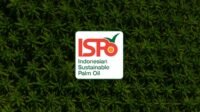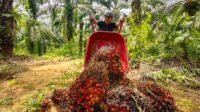PALMOILMAGAZINE, NUSA DUA — Rising tensions in global vegetable oil trade are putting Indonesia’s palm oil exports under pressure, as Malaysia moves faster than Indonesia to secure trade advantages with the United States. Commodity analyst Alvin Tai from Bloomberg highlighted the critical dynamics during his presentation at the Indonesia Palm Oil Conference (IPOC) 2025 and Price Outlook 2026, attended by Palmoilmagazine.com in mid-November 2025.
According to Alvin, Malaysia has already signed trade agreements granting 19% import duties and zero tariffs for key commodities including palm oil, cocoa, and rubber. These tariff benefits immediately make Malaysian vegetable oil cheaper for US markets—but not without a cost.
“Malaysia must purchase semiconductors, aerospace components and equipment, and data center infrastructure worth USD 150 billion over five years,” Alvin explained. “In addition, Malaysia is required to import coal worth USD 204 billion and allocate USD 70 billion in equity investments.”
Also Read:
Meanwhile, Indonesia remains in the early stages of negotiation. Under a framework released by the White House in July, Indonesia is being asked to purchase USD 15 billion in energy products annually, USD 4.5 billion in agricultural products, and 50 Boeing aircraft.
More sensitive demands involve trade liberalization: Indonesia is asked to remove tariffs on 99% of US food and agricultural industrial products and ease non-tariff barriers.
Alvin emphasized that the removal of non-tariff barriers is particularly decisive. Without protection, US agricultural commodities—especially corn—could flood the Indonesian market.
“If US corn enters freely, price disparities will shrink. That benefits the poultry industry, but could hurt local corn farmers who currently sell at a premium of up to 150% over international prices,” he said.
The pressure on Indonesia’s palm oil exports is already evident. In 2024, Indonesia exported 1.54 million tons of palm oil to the US, valued at USD 1.59 billion. But in the first seven months of 2025, exports to the US plummeted 25.8%, while Malaysia aggressively filled the gap.
“Every shipment decline from Indonesia, Malaysia steps in to replace it,” Alvin noted. Data shows Malaysian palm oil exports to the US in the first seven months of 2025 nearly matched the total exports for 2024—a clear sign Malaysia is exploiting the trade window aggressively.
Also Read: Astra Agro’s Metagenomic Innovation Earns International Award at PIPOC 2025
The US is facing a shortage of vegetable oil feedstock for biodiesel and renewable diesel. While soybean processing capacity is increasing, projected to reach 2.78 billion bushels by 2030, soybean oil production alone cannot meet demand. Total feedstock demand is about 43 billion pounds, whereas supply—including imports from Canada and Mexico—only reaches 34.5 billion pounds.
“Logically, this should be a huge opportunity for palm oil,” Alvin said. “But that opportunity will be lost if Indonesia loses its foothold in the US market.” (P2)





































